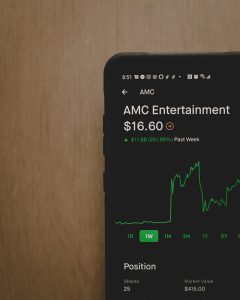Support and resistance zones are crucial elements in forex trading, as they help traders to identify potential price levels where the market is likely to react. These zones are based on the concept that the market tends to react to certain price levels, which have been tested multiple times in the past. In this article, we will explain how to mark support and resistance zones in forex trading.
What are Support and Resistance Zones?
Support and resistance zones are price levels where the market tends to react, either by reversing or consolidating. Support zones are price levels where the market has previously found buying pressure, leading to a price bounce. Resistance zones are price levels where the market has previously found selling pressure, leading to a price drop.
These zones can be identified by looking at the historical price chart and identifying the levels where the market has previously reversed or consolidated. It is important to note that support and resistance zones are not exact price levels, but rather ranges of prices where the market tends to react.
How to Mark Support and Resistance Zones?
There are several methods that traders use to mark support and resistance zones. Some of the most popular methods are:
1. Horizontal Lines
The simplest method to mark support and resistance zones is to draw horizontal lines on the chart at the levels where the market has previously reversed or consolidated. Traders can use the high or low of the price range to draw these lines. Once the lines are drawn, traders can monitor the price action around these levels to identify potential trading opportunities.
2. Trendlines
Trendlines are another popular method to mark support and resistance zones. Traders can draw trendlines by connecting two or more swing highs or swing lows. Once the trendline is drawn, traders can monitor the price action around the trendline to identify potential trading opportunities.
3. Fibonacci Retracement
Fibonacci retracement is a technical analysis tool that uses horizontal lines to indicate areas of support or resistance at the key Fibonacci levels before the price continues in the original direction. Traders can use Fibonacci retracement to mark support and resistance zones by drawing lines at the key Fibonacci levels.
4. Moving Averages
Moving averages are indicators that help traders to identify the trend direction and potential support or resistance levels. Traders can use moving averages to mark support and resistance zones by identifying the levels where the price tends to bounce off the moving average.
5. Pivot Points
Pivot points are a popular method to mark support and resistance zones. Pivot points are calculated based on the high, low, and close of the previous day’s trading session. Traders can use pivot points to identify potential support and resistance levels for the current trading session.
Conclusion
Support and resistance zones are crucial elements in forex trading, as they help traders to identify potential price levels where the market is likely to react. These zones can be identified by looking at the historical price chart and identifying the levels where the market has previously reversed or consolidated. There are several methods that traders use to mark support and resistance zones, including horizontal lines, trendlines, Fibonacci retracement, moving averages, and pivot points. Traders should use a combination of these methods to identify potential trading opportunities and manage their risk.





